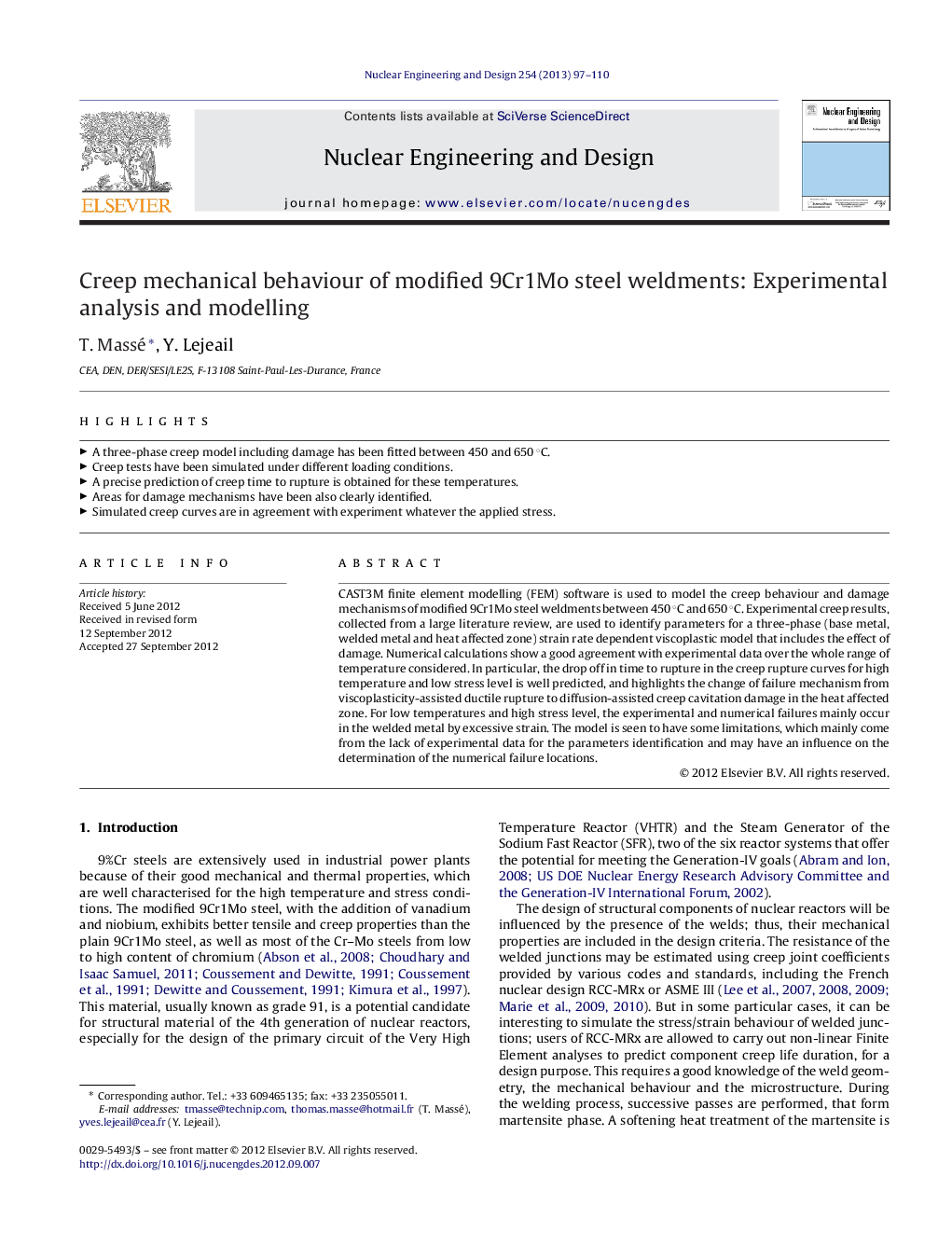| کد مقاله | کد نشریه | سال انتشار | مقاله انگلیسی | نسخه تمام متن |
|---|---|---|---|---|
| 296805 | 511742 | 2013 | 14 صفحه PDF | دانلود رایگان |

CAST3M finite element modelling (FEM) software is used to model the creep behaviour and damage mechanisms of modified 9Cr1Mo steel weldments between 450 °C and 650 °C. Experimental creep results, collected from a large literature review, are used to identify parameters for a three-phase (base metal, welded metal and heat affected zone) strain rate dependent viscoplastic model that includes the effect of damage. Numerical calculations show a good agreement with experimental data over the whole range of temperature considered. In particular, the drop off in time to rupture in the creep rupture curves for high temperature and low stress level is well predicted, and highlights the change of failure mechanism from viscoplasticity-assisted ductile rupture to diffusion-assisted creep cavitation damage in the heat affected zone. For low temperatures and high stress level, the experimental and numerical failures mainly occur in the welded metal by excessive strain. The model is seen to have some limitations, which mainly come from the lack of experimental data for the parameters identification and may have an influence on the determination of the numerical failure locations.
► A three-phase creep model including damage has been fitted between 450 and 650 °C.
► Creep tests have been simulated under different loading conditions.
► A precise prediction of creep time to rupture is obtained for these temperatures.
► Areas for damage mechanisms have been also clearly identified.
► Simulated creep curves are in agreement with experiment whatever the applied stress.
Journal: Nuclear Engineering and Design - Volume 254, January 2013, Pages 97–110